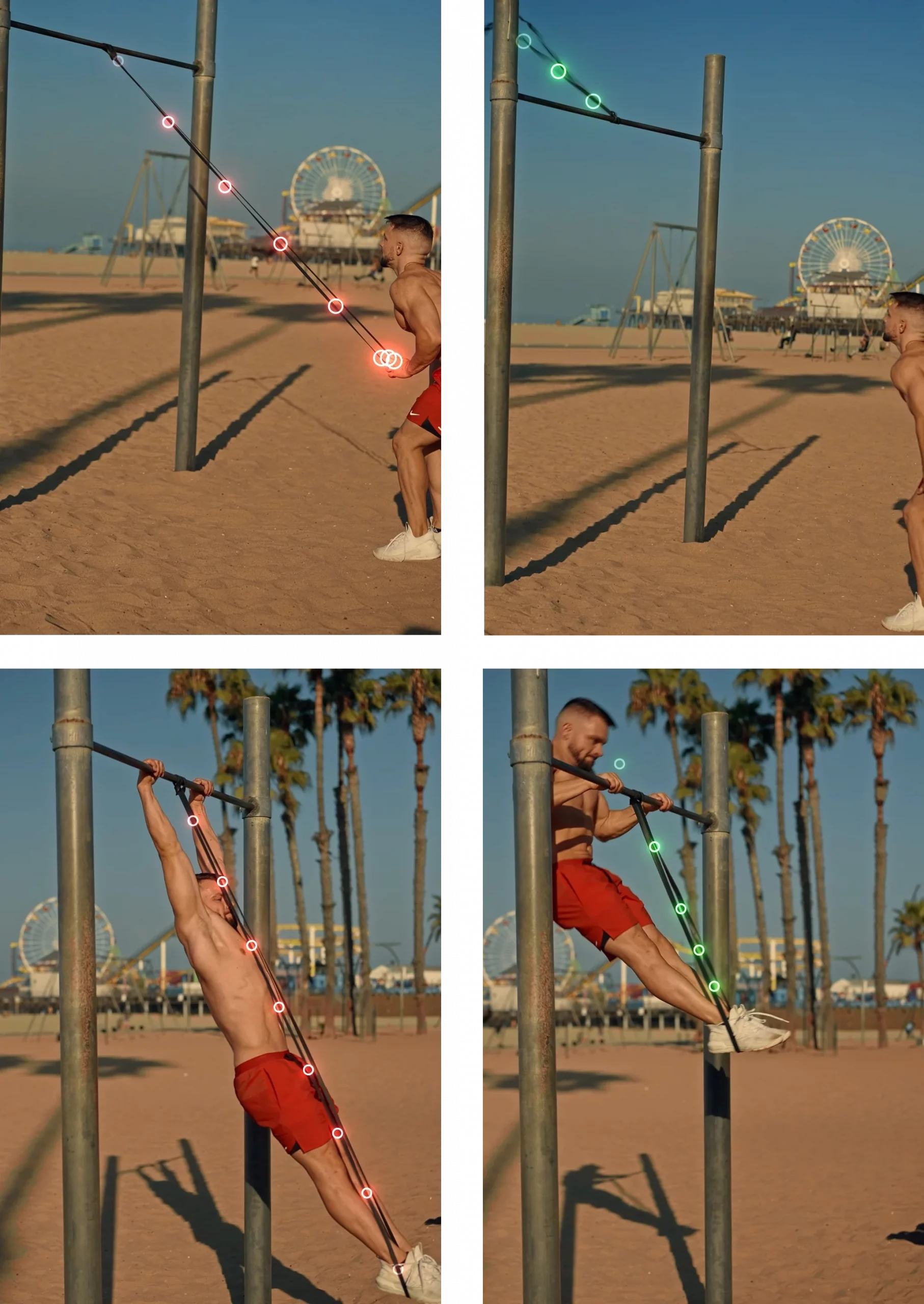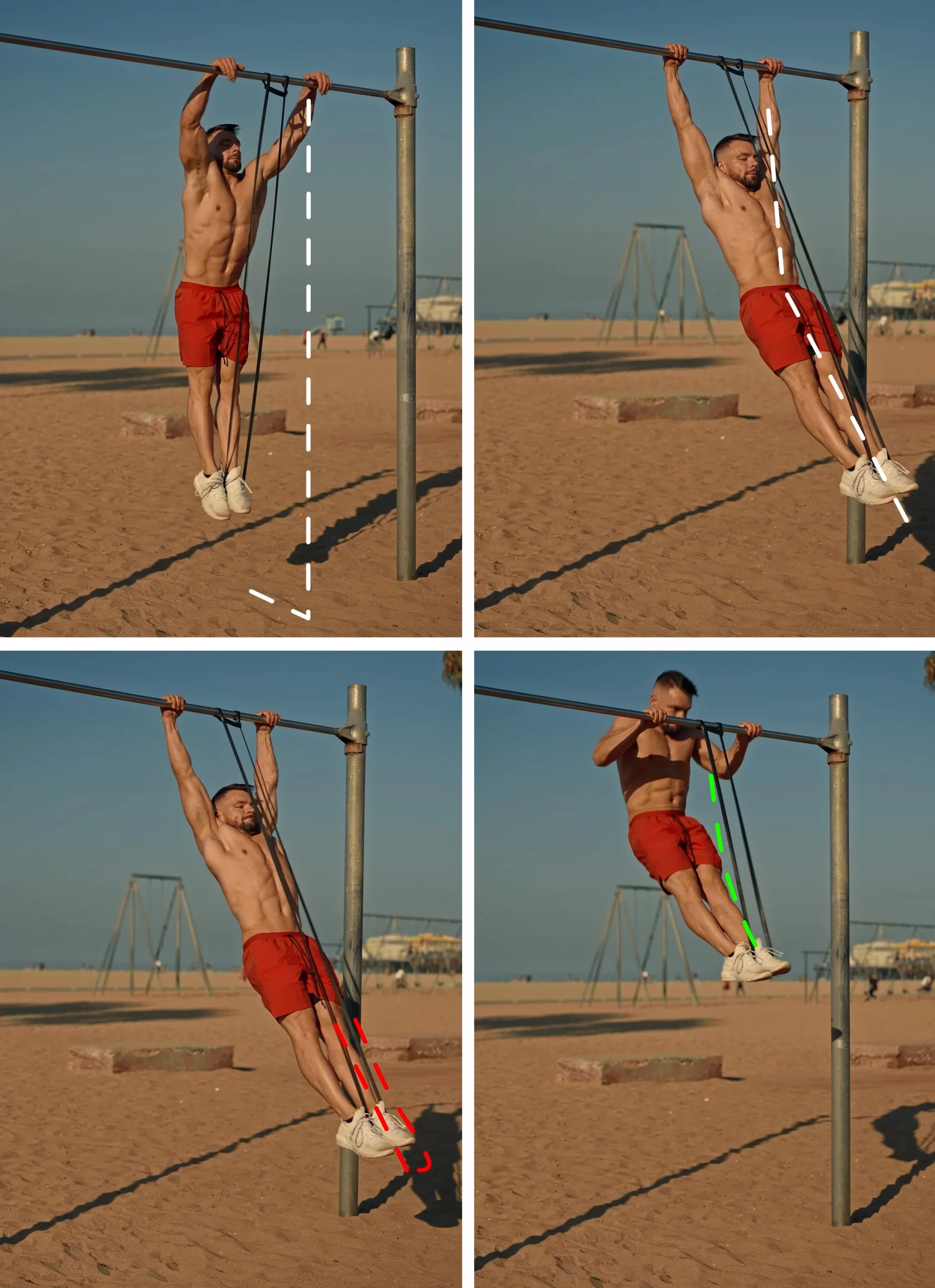What is a Bar Muscle Up?
A bar muscle up refers to a movement when athletes go from hanging underneath the bar to being supported on top of it. In this specific case this muscle up movement is performed on a straight bar.
There are many different variations of the muscle up like for example the kipping muscle up that we see often in Crossfit or the traditional strict ring muscle up on rings. Depending on the variation of muscle up chosen technique needs to be adapted and a different amount of specific strength will be required.
What are the components of the Muscle Up?
A bar muscle up always starts with the athlete hanging vertically from the bar. The first step is to pull the body up to get as high as possible on top of the bar. The athlete should be able to pull the bar at least until the upper chest or better even underneath the chest using momentum created during the pull up motion.
Step 2 of any muscle up is the transition from the high pull up to the deep dip. Whilst the movement is similar the technique on the bar and rings can be rather different here and must be trained specifically and intensely.
Last but not lease we have the dip portion when the athlete extends the arms and pushes the body all the way up on top of the bar.
Whilst the way down is traditionally not part of the muscle up it should be trained and considered carefully as it is vital to always exit the apparatus in a safe and secure manner to reduce risk of injuries. Many strength gains can be made on the way down.

How Hard is the Bar Muscle Up?
The dynamic bar muscle up with a slight stretch and swing is not very difficult to learn. It combines some explosive pulling strength with technique, momentum and dip strength.
Anybody with a decent fitness level who is able to do at least 5 pull ups and 3 dips can learn the bar muscle up.
How long does it take to learn the Bar Muscle Up?
Whilst training results vary between athletes to another the bar muscle up is a movement that can be learned in just a few workouts. Depending on your current strength and body awareness level you will not have to gain any new skills but simply get used to the specific momentum of the muscle up through the drills described below.
Is the bar muscle up easier than the ring muscle up?
Getting your first bar muscle up is significantly easier than the strict muscle up on rings. For one on the bar your hands are connected to the bar giving you stability. Additionally, you can and should use momentum on the bar whilst on the other hand on rings it is expected of you to rise up using force exclusively.

How to do a Bar Muscle Up?
Making it on top of the bar with a muscle up is pretty simple. Getting used to the specific timing and momentum can be a bit more tricky. We have to combine explosive pull up strength with dynamic technique and dip pushing strength.
Whilst the muscle up is usually looked at as a strength drill the bar muscle up specifically is quite dynamic and therefore much easier to achieve than other muscle up variations. Whilst we often see muscle ups in Crossfit which are also dynamic the technique used in Crossfit is quite far from the technique described here.
Step 1: Understanding the Movement is key
Understanding the movement or specifically the direction of the movement is the most essential step when training bar muscle ups. During the ring muscle up the athlete rises up in a straight line. On the bar this is obviously not possible as you will get stuck and hit your head.
During bar muscle ups the athlete has to move up and back in a diagonal line to get around the bar with the head before then pulling towards the front to bring the upper body on top of the bar.
In order to create direction and even momentum for this diagonal line the athlete starts by swinging slightly towards the front in a hollow body position to stab the feet down in a 45 degree angle.
Picture your body like an elastic band attached to the bar. If I pull the elastic in the right angle before letting it go it will snap right on top of the bar where we want to be after the high pull up.
This is why it is so great to train with the elastic in order to develop the precise technique and direction of the muscle up. Stretch the elastic with your feet in the direction you rehearsed before. Then simply let your body shoot back and up in a perfectly straight to get on top of the bar. Now simply pike and push with your arms.
Step 2: Work on the muscle up swing
The muscle up swing is the most technical work that has to be done to master muscle ups. Perfecting your swing will take time but you do not need a perfect swing to make it on top. All you need is a precise swing in the right direction. Keep in mind that the swing described here is different than the swing used in Crossfit.
Jumping Taps
Always start your muscle ups standing slightly behind the bar. For this first progression we want to simply jump straight up with a slight hollow body position, tap the bar and land back on the floor right where you started.
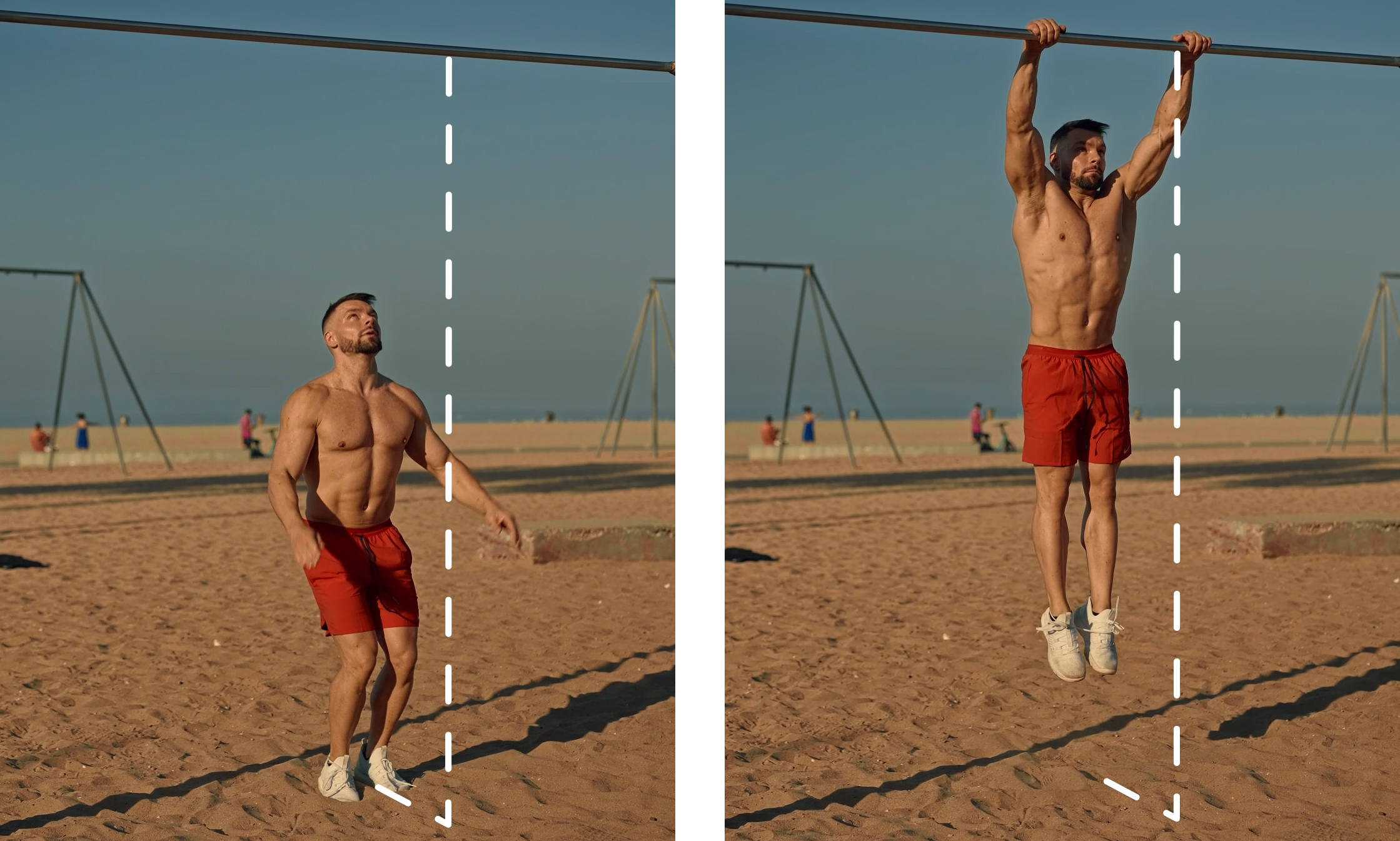
Jump to Reach
Lay something on the floor in front of you as a target. This destination should be approximately where you pulled the elastic to earlier when you let it snap on top of the bar.
Star the drill with exactly the same jump as above. Only difference this time grab the bar and let your body swing forward holding on to the hollow body position. Once you reach the font stretch your body out long and try to touch the target with your feet. Swing back and simply jump down.
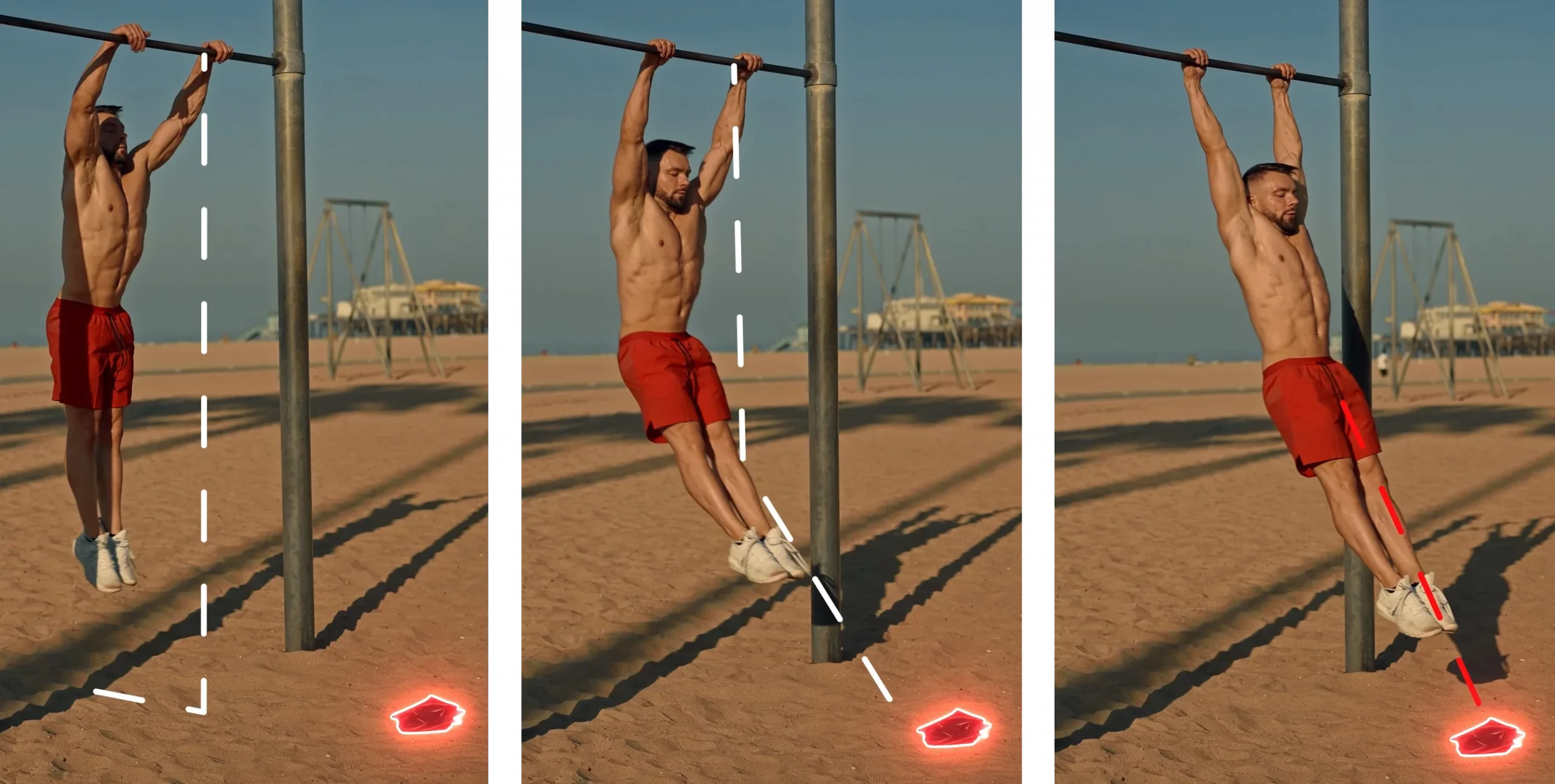
Dynamic Swing to Pull Up with Band
Attach a rubber band made for calisthenics on the bar between your hands. Place 1 foot inside of it. The band should be stretched out giving you support if you are hanging from the bar.
Starting again behind the bar or jump up, swing towards the front in a hollow position until you are ready to reach for the target. Stretch the elastic long. Now use the momentum and direction created by the elastic combined with all pull up power that you have to pull yourself up and past the chest to bar pull up on top of the bar with. This should happen in one dynamic and explosive movement.
Keep your legs in this diagonal line in front of the bar. You never ever want your legs to swing behind the bar!
Alternatively you can also start on a box behind the bar where you can already grab the bar with your hands from the start. Simply start the skill by stepping of the box and reaching towards the front.
Perfecting the Swing
The final step is of course performing the entry without the elastic. As long as your pull ups are strong and explosive enough this is not going to be a problem and you will make it up and around the bar easily.
Even if you are already very strong I still recommend first getting used to the muscle up swing with the help of the elastic as no technical tool or aid will compare to the coaching you can receive from the stretching piece of rubber.
Step 3: Improve your base strength
Momentum and direction is great but it won’t help you much if you do not have the base fitness & strength needed for the muscle up. We need 2 things really. Pulling and pushing strength are key when it comes to smooth and beautiful performance of this skill. Let’s look at both a bit more in detail.
Pulling Strength for the Muscle Up
This skill starts with an explosive pull up. For that we need a few things. Starting on top of the line we need gripping and scapula depression strength. Both can be developed well by training scapula pull ups. You can do them by simply hanging from the bar. Make sure to go extra slow on the way down to decrease risk of injuries.
Moving down the chain we need pull up strength in 2 versions. We need to be able to pull very high. The higher the better. Here again use the elastic to train supported chest to bar pull ups. Pulling higher will require you to engage different muscles in different angles. Train for this specifically.
Additionally, we need our pull ups to be explosive. You can try jumping pull ups or train pull ups with additional weight on your back to build up extra strength.
Pushing Strength for the Muscle Up
Once on top we need to push up. For that we need dip strength which means we need to increase triceps, chest and core strength in the hollow body position. Your dip does not have to be dynamic and you only have to do 1 single dip. Chances are high you will not have to spend too much additional time on improving your dips.
If you are completely new to dips start by training push ups and triceps isolation exercises such as overhead triceps extensions with the elastic. I also recommend to include straight bar push ups in your early training routines to get used to the specific hand position of the bar muscle up. If you want to increase the difficulty of your straight bar push ups simply elevate your feet on a box.
Later move on to training p-bar dips to build strength and coordination in the movement. You can do these with the assistance of a band if too hard or add weight in case they are getting too easy. Soon graduate to Ukrainian Dips to help with the transition and work on your straight bar dips.
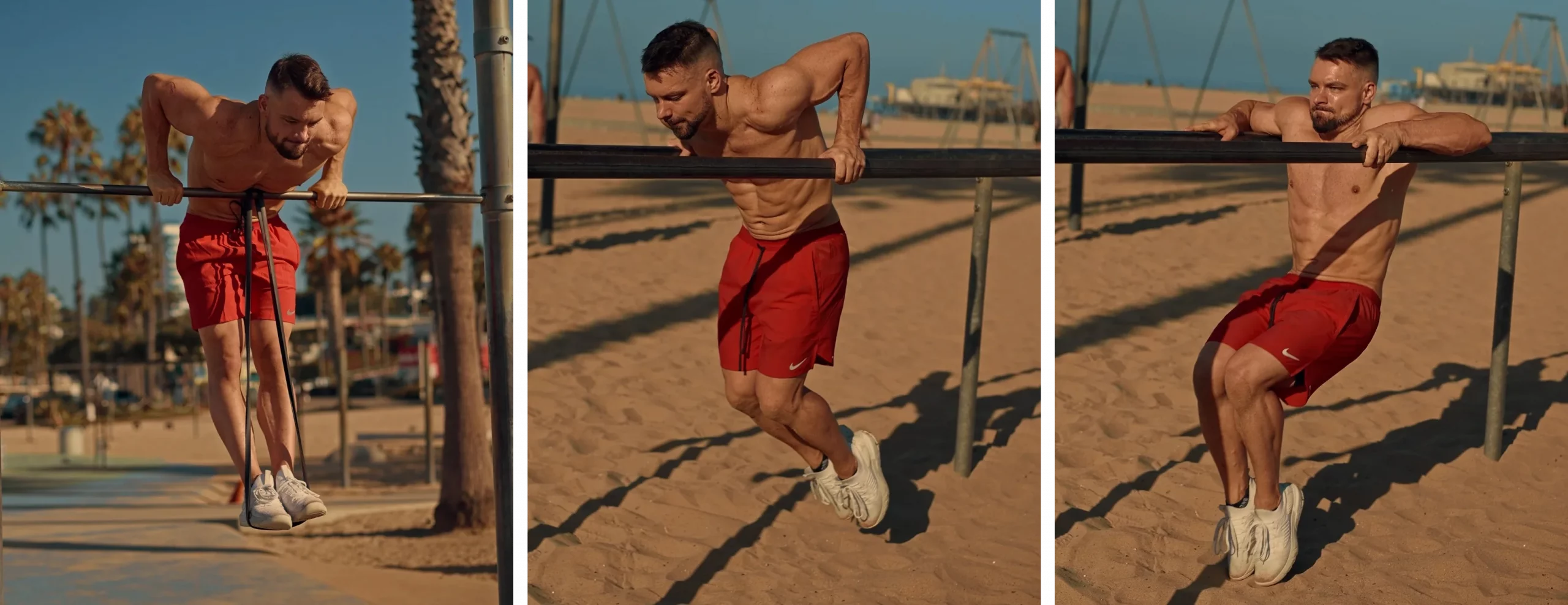
What about False Grip and Bar Muscle Ups
Everybody loves talking about False Grip. As a child I was paralyzed with fear when ever my coach brought it up. Yet, just like anything else it is something you can and will get used to.
What is false Grip?
The best way to describe false grip is to visualize it. Imagine being on an upright position on top of the bar. You are now lowering down into a pull up position but you are not allowing your hands to rotate on the bar. You are now basically hanging from the bar but your hands are gripping around the bar on top of it.
We need this false grip for most movements when we need to go on top of the bar as we can not get in to the dip position with our hands staying in a regular pull up grip.
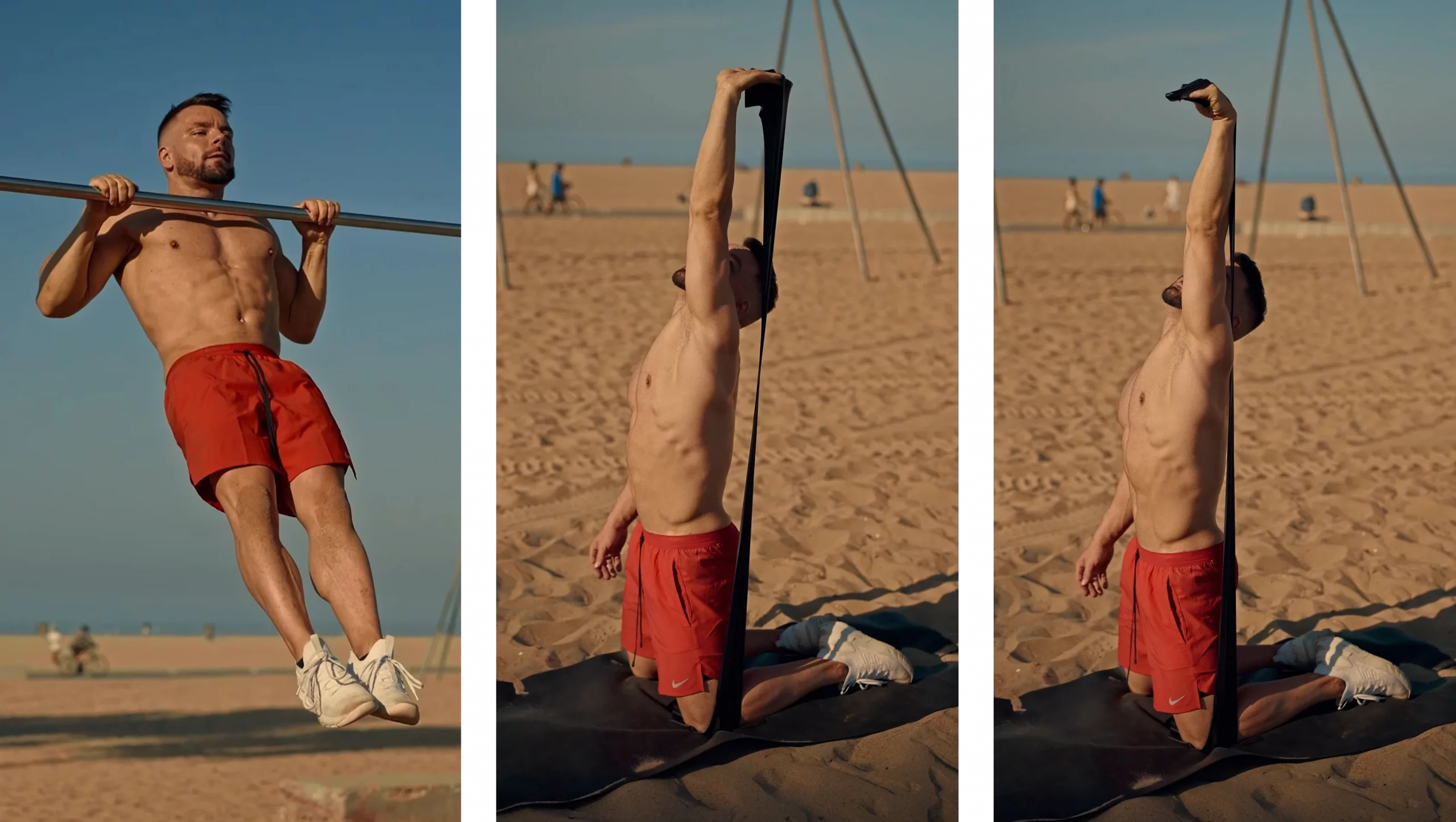
Can I do the Bar Muscle Up without False Grip?
False Grip is actually not needed for the Bar Muscle Up. As we are using momentum and explosive energy to get on top of the bar we can use the moment of weightlessness to rotate the hands on top when we are switching from the high pull up to the deep dip.
Yet, false grip is helpful when training bar muscle ups. Not having to switch the hands around during the transition means less energy needs to be deployed. Additionally, for many it is easier to get high on top of the bar during the pull with false grip
How to develop false grip?
The key for improving your false grip is allowing your body to take time to grow and recover. You can not rush this. False grip should be improved slowly over time with a couple specifically targeted sets through your pulling workouts.
Not only do you have to develop wrist flexion strength to support your body weight in the false grip position but also will you have to develop a certain amount of tolerance to discomfort and skin resistance as the false grip can be perceived as rather uncomfortable.
My 2 favorite ways of training for the False Grip is by working scapular pull ups and regular pull ups with tennis balls in your hands instead of gripping the bar. The balls give you purpose and will start you training towards the false grip.
Additionally, all types of wrist flexion strength drills will help you work towards a better false grip.
How to train for my first Bar Muscle Up?
We have already discussed in depth how to do the bar muscle up and what exactly you need to work on to improve your bar muscle ups. Now let’s have a look at how exactly you should actually train for the specific movement of this skill.
Train what matters but don’t neglect assistance muscles
Work on your entry, work on your high and explosive pull ups, work on your dips. That stuff is obvious but make sure not to neglect the not to obvious stuff. Include grip strength and scapula depression work into your routine. Include core stability drills into your training plan to make sure you can hold your hollow body dip position on top and stop the momentum.
Don’t forget to also add prehab and injury prevention work for your shoulders and triceps. Health should always be the highest priority of your workouts. You love to train? Well if you get hurt you can not train anymore so staying healthy must be your highest priority.
Stretch after your workouts and roll your sore muscles. Make sure you get adequate protein in your diet to build new muscle and regulate your sleeping schedule as much as you can to maximize recovery and your gains.
Don’t forget to take your general fitness levels into account. Improving over all fitness will give you more energy during your workouts and helps you recover faster between your sessions.

Create your own training program
When building your workout plan you first have to decide for a training split or in other words which part of your body to train when. You can not train every muscle every day. You would not be able to recover and therefore won’t build new muscle. That is why it is recommend to leave 48h between workouts of the same muscle group.
A problem with the muscle up is that it includes pulling and pushing movements so traditional push/pull/legs splits won’t work for us here. Really we only have 2 obvious options.
We can either adapt to doing 3 full body workouts per week working on our muscle ups, pushing, pulling and leg strength 3 times per week or we can keep workouts a bit shorter and more focused by using an upper/lower body split.
Personally, I would go with the upper/lower body split as overall training volume per workout will become less allowing me to stay more focused on details and to make more gains in specific fields. The downside of the upper/lower body split is that you have to come into the gym more frequently as we still want to train muscle ups 3x per week if possible.
Use everything you have
I mean this in the most literal sense I possibly could. As long as you are safe do what ever you can to simply make it up on the bar. Your first muscle up does not have to be perfect. Your second one won’t be perfect either. But with every single muscle up that you will do they will get better and eventually they will become so easy that you won’t even think of them anymore.
Respect your body
Whilst we do want to make it up no matter what we still have to respect out body. Like I said above health must always come first. When getting close to nailing a skill for the first time it can be very easy to forget about all common knowledge and to simply beat into the body until we either make it or the body gives up.
I recommend to write up am precise plan of what you are planning on doing in your next session. Follow this plan as closely as possible. You can do a bit extra on one end and possibly a bit less on the other but make sure to stick approximately to the planned volume.
If you get tired and start to throw one shoulder on top without the other or if you start to feel a blister coming take a rest. Do some accessory and injury prevention work and call it a day. Better to go home getting ready for the next training then having to sit out for 2 weeks!
How to do a static Bar Muscle Up?
The strict muscle up on the bar is a highly advanced drill that will require many years of practice. Growing up doing gymnastics our coaches made us do them every Wednesday and it was pure horror.
Personally, I am not a big fan of the strict bar muscle up as I believe it places far too much pressure on the elbows. Whilst it is a fun and exciting goal to work towards to I would recommend to work on the ring muscle up before. Ring muscle require similar technique to the bar muscle up whilst being significantly more gentle on your body.
Bar muscle ups do not have to be hard and training for the bar muscle up will help you increase your arm pushing and pulling strength just like core stability and overall body awareness.
Muscle ups truly are for everyone. Are you ready to take the leap?! Let’s get to work!


